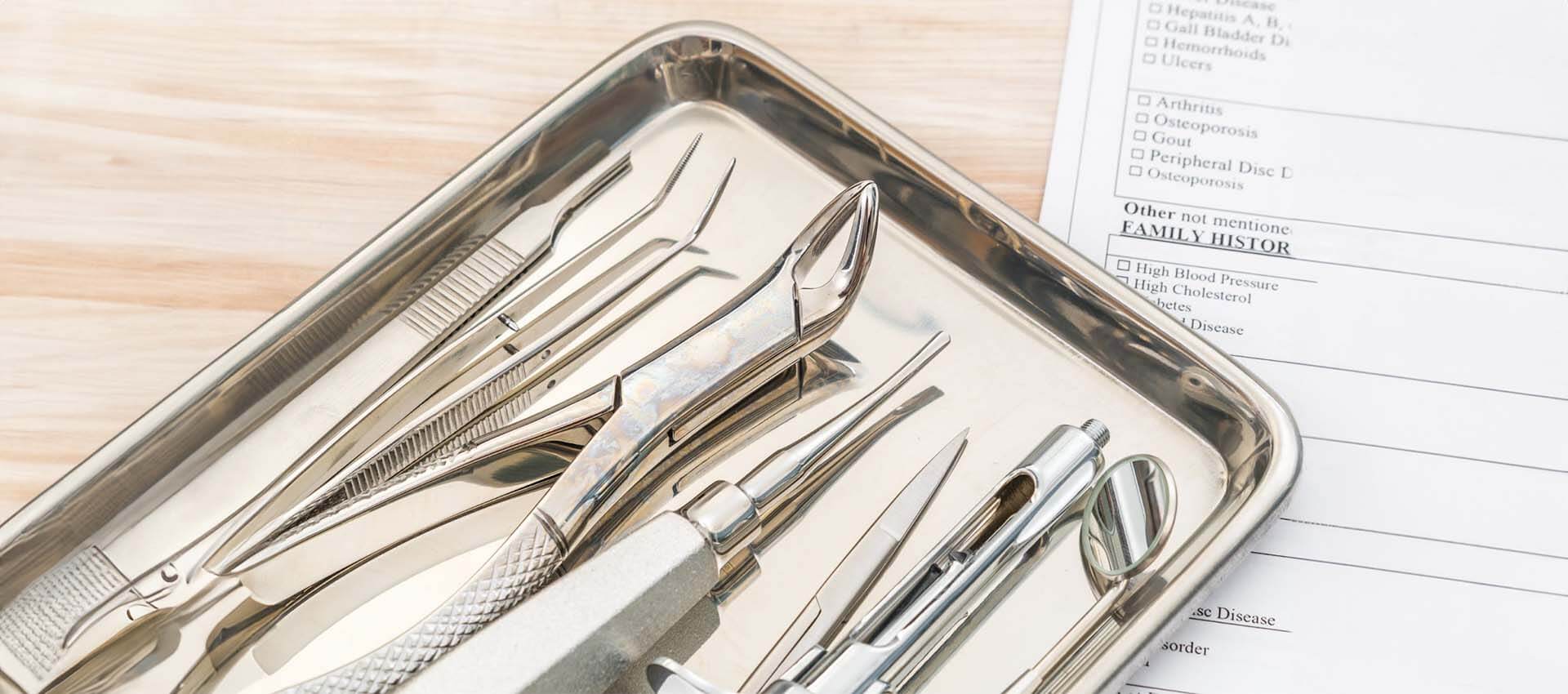As a professional, you highly value the precision and accuracy of your dental tools. You're always looking for ways to extend their lifespan. But when was the last time you considered disposing of tools that no longer provide the precision your practice needs? Even the highest-quality instruments wear out over time. Dull or damaged tools can negatively impact your dental procedures. It's crucial to know when and why you should retire a tool.
Why You Should Retire a Tool
Healthcare professionals rely on precision, cleanliness, and safety. Using damaged tools compromises results and increases patient discomfort. While tools can be used for extended periods with proper sterilization, even these processes degrade the tools’ precision over time. Here’s why retiring a tool is essential:
- Patient Safety: A dull or faulty tool can increase the risk of complications and infections.
- Operational Efficiency: Well-maintained instruments reduce procedure times and enhance accuracy.
- Cost Management: Regular replacement helps avoid unexpected downtime and emergency replacements.
Know When You Should Retire a Tool
The expected lifespan of each tool varies, depending on its material and usage. For example, the average lifespan of a steel scaler is over 12 months, while instruments made from newer metal technology last 15 to 18 months. Professionals suggest that if 20% of a tool’s width or length is reduced, it's time to retire it. Here are key signs it's time for a replacement:

1. Visible Wear and Tear
Examine your instruments visually before making a decision. For instance, when you observe a dull instrument under light, the rounded surface of its cutting edge reflects light, while a sharp instrument does not. Check for the following:
- Corrosion or Rust: Instruments exposed to moisture and heat can develop rust, especially if improperly dried or sterilized.
- Cracks or Chips: Tools like dental scalers or surgical blades are prone to cracks, making them ineffective or dangerous.
- Dulling of Cutting Edges: Instruments like scalpels or scissors must maintain sharp edges. If cutting becomes inconsistent, it’s time for a replacement.
- Diamond Burs: Should be changed after five teeth preparations at most.
2. Frequent Repairs
If you're frequently repairing an instrument, it’s time to consider a replacement. Surgical instruments often require calibration, but if they become ineffective, it indicates internal wear. Such tools can cause significant procedural errors. It’s better to make a one-time investment than waste time and energy on repairs.
3. Poor Performance
Reduced precision is another sign that a tool should be retired. Precision is a top priority for dental professionals. For example, uneven tips in dental explorers may fail to detect calculus. Common risks of using sub-optimal instruments include:
- Reduced Tactile Sensitivity: A worn scaler may struggle to detect or remove deposits effectively.
- Increased Risk of Slipping: Dull instruments increase the likelihood of harming soft tissues.
- Greater Effort Required: Removing deposits with a dull tool demands more pressure, negatively affecting patient comfort and clinician performance.
- Clinician Fatigue: Repeated strokes can cause fatigue in the hand, wrist, arm, and shoulder.
- Time-Consuming Procedures: More strokes mean longer procedures, which can outweigh the time saved by sharpening or replacing the tool.
4. Sterilization Difficulty
Surgical instruments made from stainless steel are durable and withstand thousands of sterilization cycles. However, tools with silicone grips or plastic components may crack. If an instrument can’t withstand the sterilization process, it’s time to replace it.
Laboratory tests show that most high-speed handpieces can retain optimal performance for up to 500 sterilization cycles.
Best Practices for Maintaining Precision Instruments
The best instruments are worthless if not maintained properly. Replacing dental tools at the right time is essential for maintaining your clinic’s standards. Follow these practices:

1. Follow the Manufacturer's Guidelines
Each dental tool comes with manufacturer guidelines. Follow them thoroughly to prevent early tool damage.
2. Set Up Routine Inspections
Before a tool fails, set up a routine inspection schedule. Regular checks help identify early signs of wear. Keep a record of age, condition, and sterilization cycles to ensure precision.
3. Use Sharpening Services
If the tool is still in good condition, use sharpening services. However, regular sharpening reduces a tool’s size, so if it becomes too frequent, it's time to retire the tool.
4. Train Your Team
Teach your staff to use tools only for their intended purpose. For example, don’t use a scaler to open packages. Training staff ensures proper handling and prolongs tool life.
When to Replace Dental Instruments
- Scalpels: Replace blades after each use. Handles should be inspected for rust and replaced if worn.
- Dental Scalers and Curettes: Sharpen regularly, but replace every 6-12 months based on usage.
- Forceps and Needle Holders: Replace when worn serrations or loose joints are noticed.
- Mirrors and Explorers: Explorers should be replaced if tips bend or dull, while mirrors can last longer with care.

FAQs
- How
often should you sharpen dental instruments?
Sharpen instruments weekly. Periodontal hand instruments get dull after 15 to 45 scaling strokes, so regular sharpening is essential. - How
long do dental instruments last?
Dental instruments typically last between 6-12 months, while those made from stainless steel can last 18 months or more. Using sterilization cassettes can extend the lifespan.
Choose Artman Instruments for Lasting Precision
Dental professionals must ensure safety, precision, and accuracy in their procedures. Using high-quality precision instruments is the first step toward maintaining standards and avoiding costly mistakes.
Artman Instruments promises that precision. We are committed to offering dental and surgical tools that deliver accuracy and longevity. Explore our wide range of instruments and see for yourself!

